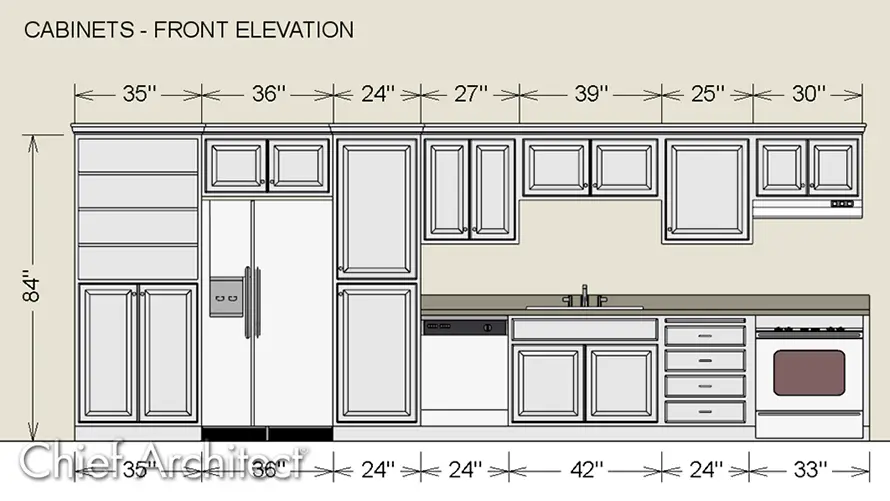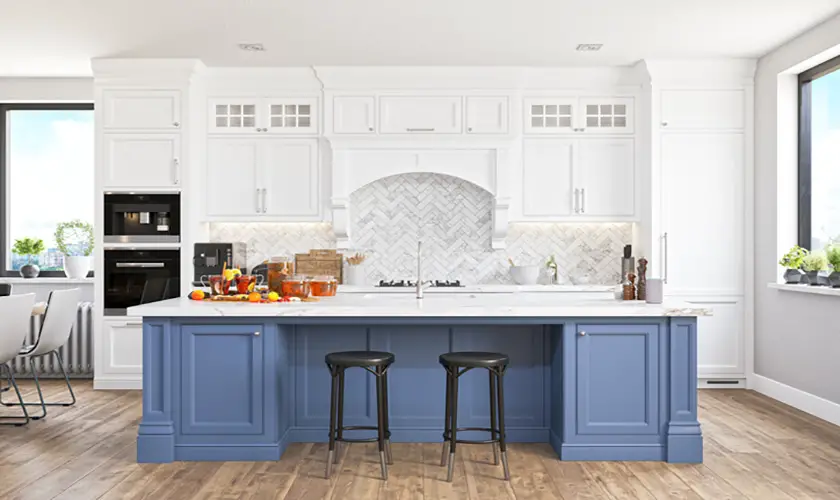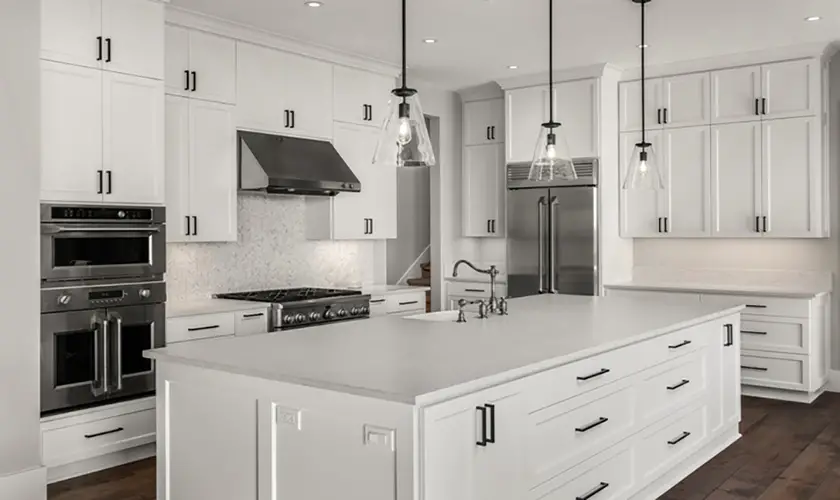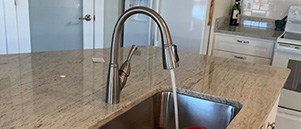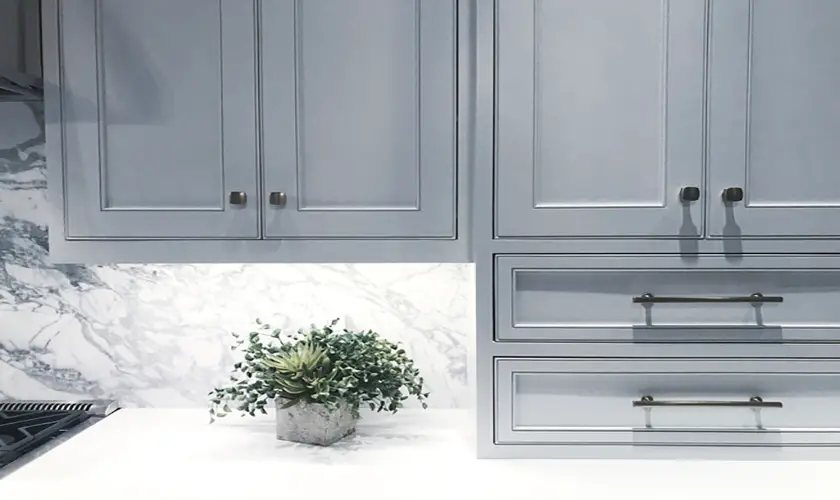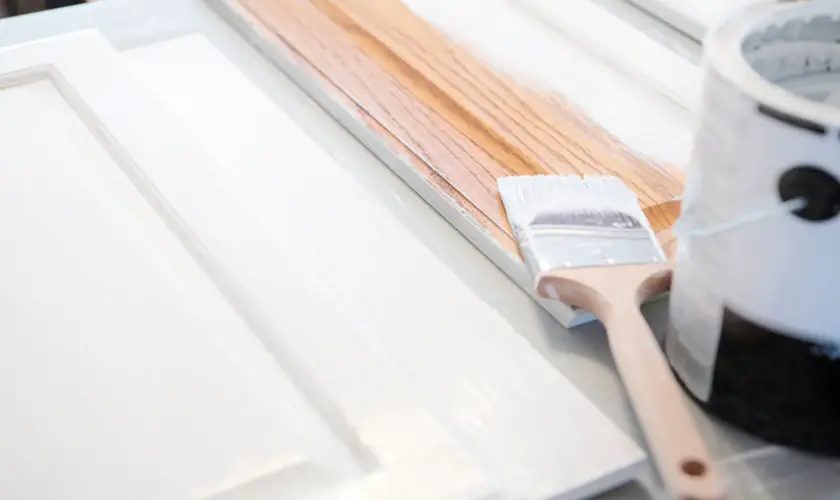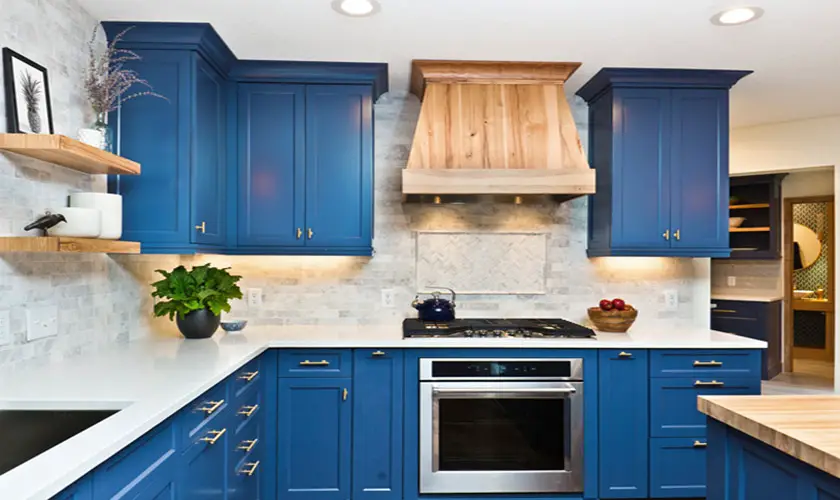
Renovating your kitchen to match what you have always dreamed it can be, at times, can feel a little overwhelming. It is easy to lose yourself and settle for less than you desired with many different aspects. However, one might ask how deep are kitchen wall cabinets?
A standard depth for a kitchen wall cabinet is 12 inches deep but can be 15, 18, or 24 inches depending on the kitchen’s size and the preference you want.
Standard sizes for overhead cabinets are 12, 15, or 18 inches deep and 30, 36, or 42 inches tall.
Standard base cabinets typically have a 22-inch base with a 2-inch toe kick at the bottom of the wall cabinets, making them 24 inches deep and 34.5 inches tall.
Tall cabinets, like pantry cabinets, are also typically 24 inches deep and 84 inches tall.
Single door cabinets are generally 24 inches wide, while double door cabinets can vary in standard widths from 30 to 42 inches.
While this article will not be going over the ins and outs of the nooks and crannies of your kitchen, it will target which kitchen cabinets you can get to fit in your kitchen and which ones can grant you the optimal amount of storage space.

Make Sure to Take Precise Measurements
Before we get much further into the topic itself, you will want to make sure you take precise measurements of your kitchen to know how much room you have to work with specifically, then decide which cabinets will make the most sense for you.
While making the floor plans for your kitchen, take a moment to address any concerns, wants, or more critical needs that you must include.
Ensure those focal points become the direction that leads you to determine what cabinet sizes and depths will work best for you.
How Does Cabinet Size Relate to the Rest of the Kitchen?
You do not need to be a kitchen designer to pull things together in a way that appears masterful. Still, you will need to have a firm grasp on specific topics that can prove relevant while selecting the cabinets that will work best for you.
Leave Space for Small Appliances
As you might have guessed, due to the sizes of the cabinets being the primary concern, you want to make sure you leave enough space for your small appliances. This is because nothing is worse than having to get rid of a perfect microwave oven simply because it does not fit with your new measurements!
The Overall Design
You need to consider the overall design of your room because a low ceiling height can easily change the base cabinet dimensions in that room from looking clunky to a perfect fit.
Maximizing Your Space
Another situation to be wary of is maximizing just how much space you can utilize in unique areas, like kitchen island designs that may require you to incorporate high cabinets and open shelves to keep things sleek.
Ensure Easy Access
Ease of access is one final part of the equation that becomes much more relevant when you have both elderly, young, and even movement impaired members of your home that you must take care of all with the same level of consideration.
Having that understanding can dramatically shape your kitchen itself and the lives of everyone in the home for decades to come.
Given that information, consider the question: How deep are kitchen wall cabinets?
How Deep Are Kitchen Wall Cabinets?
After taking all the standard measurements and knowing how much room you have to build your dream kitchen, you can begin planning around the wall cabinets themselves, prioritizing extra space and easy access.
Traditionally speaking, the absolute deepest wall cabinet is 24 inches. This limitation is in place to ensure that the wall cabinets themselves do not become an eyesore by jutting out further than your kitchen base cabinets.
It also comes from a place where you want to follow standard kitchen cabinet dimensions for your kitchen arrangement. You most certainly can change things up to your heart’s desire. Still, you may be forsaking utility in the name of a specific aesthetic design.
Assuming you did not want to go with the deepest, other depths come into play, with 12 inches being the standard sizes, followed by deeper cabinets of 15, 18, and 24 inches.
Finding a Happy Medium
While selecting a wall cabinet depth, you would be wise to work with the functional understanding that you are attempting to find a happy medium between the storage space offered and the workable surface area on the countertops beneath them.
Otherwise, there will be a lot of clutter on your countertops, and nobody wants that!
How Many Things Do You Need Storage For?
Another thing to consider here would be the number of plates and other niceties you intend on keeping in your wall cabinets.
To begin with, will yours only be used for plates and cups, or will they store a myriad of other objects within?
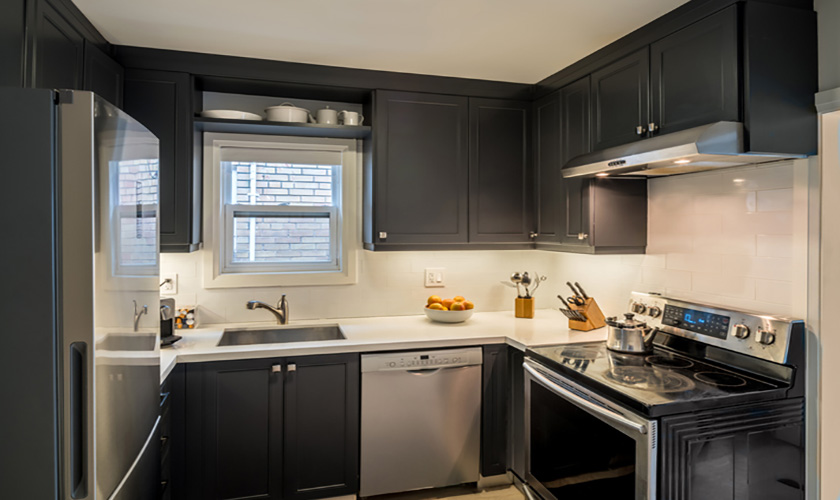
How Deep Are Upper Wall Cabinets?
The question seems to rise from a bit of confusion regarding the different types of kitchen cabinets themselves, so before moving forward, let us go ahead and dispel the misconception here.
These types, known as “upper wall cabinets,” are upper cabinets, meaning they are not touching the floor and are typically known as either upper cabinets or wall cabinets.
Still, they boil down to referencing the same kind of cabinet despite the confusing wording and potentially allowing you to think there may be different heights between them or discernable differences.
Overall, they are the same, and clarity is necessary to provide a complete guide.
Once again, the deepest a wall cabinet (or upper cabinet) can be 24 inches, with sizes ranging from as shallow as 12 inches to a maximum of 24. Many contractors and designers consider the ideal upper cabinet height to be 54 inches off the floor or 18 inches above the countertop.
What is the Common Depth of Upper Kitchen Cabinets?
As we briefly touched base earlier, the standard depth of an upper kitchen cabinet is about 12 inches.
Although, with times changing as they often do, 16 inches is becoming the norm for handling larger plates and different things you might be storing in your kitchen now.
The amount of depth your upper cabinet has means nothing if it is not appropriately installed, though.
Take sufficient time to ensure your cabinets will withstand the weight of all the glasses and plates, and double-check they have been properly mounted to the wall studs.
Depth, however, is not the only thing to consider, as you should account for height.
With significant respect for the measurement from the floor and size of the countertop being taken into account. Still, we will dive more into that below.
How High Are Wall Cabinets from the Floor?
Approaching things from a standard height and design perspective, your standard wall cabinets are approximately 54 inches from the floor to ensure a person of average height can comfortably reach the tops of the cabinet without potentially pulling a muscle or straining too much.
The sweet spot of 54 inches comes from taking the average height of a base cabinet (36 inches) and adding it into a sufficient amount of space to efficiently work in that area (18 inches), bringing you to that total. Still, there is a bit of a shake-up to be aware of.
Unique Situations You Should Consider
There are a few unique situations to consider, especially if you want to avoid high cabinets for people with limited mobility or other impairments that would cause such a height to be detrimental.
In such a scenario, you would want to lower the height to around 48 inches to alleviate any potential risks or hazards from someone who is movement impaired hurting themselves simply by trying to use their cabinets.
Are All Upper Cabinets the Same Depth?
They most certainly are not the same depth, and the reason for that stems directly from personal desires and specifications that must match a homeowner’s needs.
In a typical setting, upper cabinets can range from 12, 14, 16, 18, and 24 inches, but 12 inches is the standard in most cases.
The most significant rule of thumb to follow when selecting the depth of your upper cabinet is to double-check and see if the base kitchen cabinets have a reasonably substantial depth difference from that of your upper cabinet.
You may find a very odd setup if they are within the same depth, with a base cabinet 31 inches deep and an upper cabinet 24 inches deep. You may want to consider revising that design entirely.
Such size discrepancies will be made even more evident in smaller kitchens, where the dramatic differences between the two will become an issue from an aesthetic standpoint and in raw practicality.
Design a Floor Plan Beforehand
If you are worried about stepping over the line and size measurements becoming an issue, design a floor plan that makes sense to you and whoever will be living in the home.
When you and other household members walk through it, please take note of the same height issues we spoke of earlier health limitations.

How Much Space Should Be Between Countertop & Upper Cabinets?
There is not much guesswork required here, thankfully. Unless you were once again making a unique accommodation for someone’s design or a mobility issue, the standard amount of space between an upper cabinet and the countertop is 18 inches.
If you are doing a complete renovation to the kitchen, you might want to install the base cabinets first to guarantee you hit that magic number square on the head. Otherwise, you may have to do extra work to ensure it is reached.
The main reason you want to stick to that 18 inches of space is to provide sufficient working space for most people to utilize daily and have everything match up at a glance.
In most cases, 18 inches is also the exact height of a backsplash. So, you would also open up the possibility of furthering a specific design or its intended purpose, preventing excessive damage from occurring to the wall from drips, stains, splashes, and other mishaps that might happen while cooking.
While you may not personally want or need a backsplash in your kitchen, it also frees up a considerable amount of time in your day-to-day life because you will not need to go through the extreme amount of effort it would take to clean that wall constantly.
How Much Space Should Be Between Upper & Lower Cabinets?
Yet another bit of clarity comes into play, but it is more of a part of the lower cabinet that forms the line of division between why the amount of “space” is different.
As we noted above, you typically want about 18 inches of space between the upper and lower cabinets.
Still, the primary reason is partially due to the backsplash we spoke of, but even more so, leaning on the countertop attached to the lower cabinet.
When speaking of that 18 inches of space, that specific amount is being considered after adding the countertop. With it being the centerpiece of your working area, you will want to have every inch to avoid feeling cramped while cooking.
Does Cabinet Depth Include the Door?
While viewing the question itself, it might lead you to consider this a silly question. Still, if this article has told you anything, every bit of available space is valuable, and getting the most you can from your cabinet depth is no exception.
When calculating its depth, cabinet depth does not consider the door itself or the cabinet’s frame.
So, anything from your pantry cabinet to your high cabinet, corner cabinets, or any cabinet you can have in your home does not consider the door.
While on the topic of cabinet doors, it is worth noting that wall cabinets that are anywhere between 9 to 21 inches in depth will feature just a single entry.
While any wardrobe larger than 24 inches, ranging up to 36 inches, will feature double doors, making it easier to access the contents inside.
Conclusion
While there are standards for cabinet height and depth, there is no set rule, and the ideal height may vary based on your individual or special needs.
Stock cabinets aren’t for everyone. Many modern homes consider frameless cabinets with deeper cabinets for extra storage. Smaller kitchens focus on maximizing space.
Figuring out the exact size, shape, and dimensions of the cabinets will make your kitchen go from an ordinary space to one that becomes the home’s focal point and creates fond memories for many years to come.


